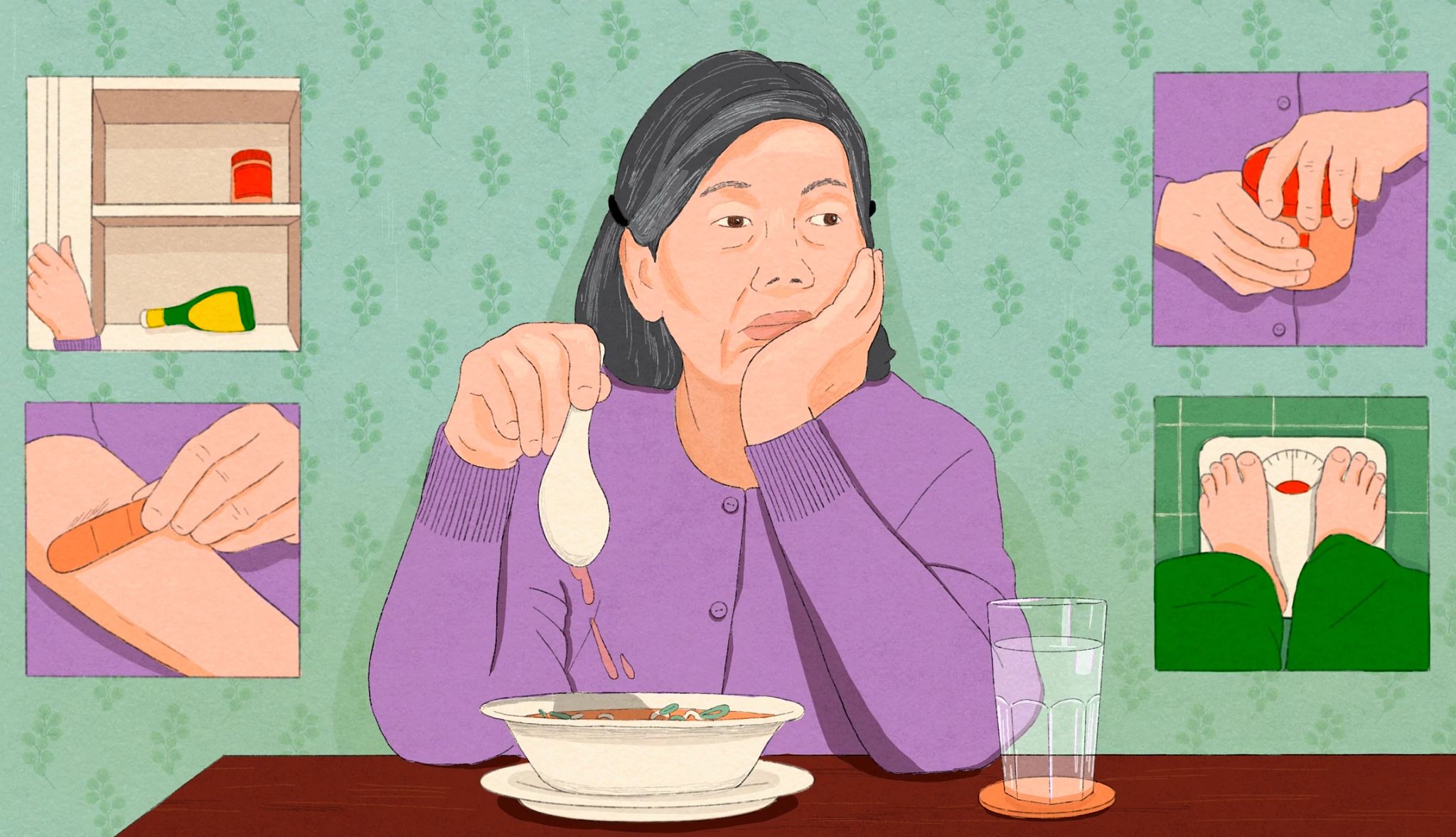Play all audios:
2. LACK OF INTEREST IN EATING OR DRINKING. If a family member has stopped cooking, is skipping meals or shows no interest in their favorite foods, those can all be red flags for
malnutrition, says Maureen Andreassi, M.D., an internal medicine physician at Novant Health Senior Care in Matthews, North Carolina. “If you’re eating with a person and they eat half of what
they normally eat, that should trigger a discussion,” Andreassi says. “You can ask questions like, ‘Are you getting full too soon? Are you having trouble swallowing?’” If your loved one is
in the hospital or a nursing home, Andreassi suggests checking their tray after meals to see what they’re eating — and how much. “If nothing is eaten except one bite out of dessert and one
bite out of mashed potatoes, that’s when you need to worry,” she says. 3. EMPTY FRIDGE AND CUPBOARDS. If your loved one still lives independently at home, discreetly check the fridge and
cabinets when you visit, suggests Elizabeth Landsverk, M.D., a geriatrician in San Francisco and author of _Living in the Moment: A Guide to Overcoming Challenges and Finding Moments of Joy
in Alzheimer's Disease and Other Dementias_. “If there isn’t any food in the fridge or it’s old and moldy, and it doesn’t look like they are making a lot of food, that’s a sign they
need more help,” Landsverk says. 4. CHANGES IN HAIR, SKIN AND NAILS. Some of the earliest symptoms of malnutrition — even before weight loss becomes apparent — affect skin, hair and nails,
according to an article in the journal _Nursing_. Nails will stop growing and may “look odd-shaped, be very brittle and crack a lot,” Planells says. Hair may thin and lose its shine; some
people also start losing hair. Malnutrition also changes the skin, making it dry, flaky and less elastic. In addition, skin will bruise and tear easily. “They might bump against a table —
to me or you it’s nothing — but for them it might create a really bad bruise,” Planells says. “There45’s increased skin breakdown, in general. Someone who is in bed for a day, their skin
might break down and they get bedsores.” 5. FREQUENT, PROLONGED INFECTIONS. If your loved one gets frequent colds or urinary tract infections, that, too, can be a symptom of malnutrition.
“People who are more malnourished won’t mount an immune response to infections as well,” Landsverk says. It also takes longer for them to recover if they are ill, she says. 6. DELAYED WOUND
HEALING. A malnourished person’s weakened immune system also leads to slower wound healing, whether it’s a surgical incision or a pressure ulcer that developed from staying in one position
for too long. In studies that compare healing rates after surgery, malnourished patients are twice as likely to have a delay in wound healing compared to those who are well-nourished. 7.
DECREASED GRIP STRENGTH. Does the older adult in your life struggle to open jars, hold utensils or carry groceries? Studies show decreased handgrip strength is a predictor of low nutritional
status, because of the muscle loss and weakness resulting when someone doesn’t get enough nutrients. The connection is so strong that doctors and dietitians often check grip strength when
they’re screening someone for malnutrition, Andreassi says. 8. WEAKNESS, FATIGUE AND CONFUSION. Malnutrition can make your loved one feel tired and weak, and they may start to struggle with
mobility and the activities of daily living. Malnutrition is also linked to confusion and brain fog. Even in children, malnutrition is linked to poor cognition. (Here are foods that can
boost brain health.)

